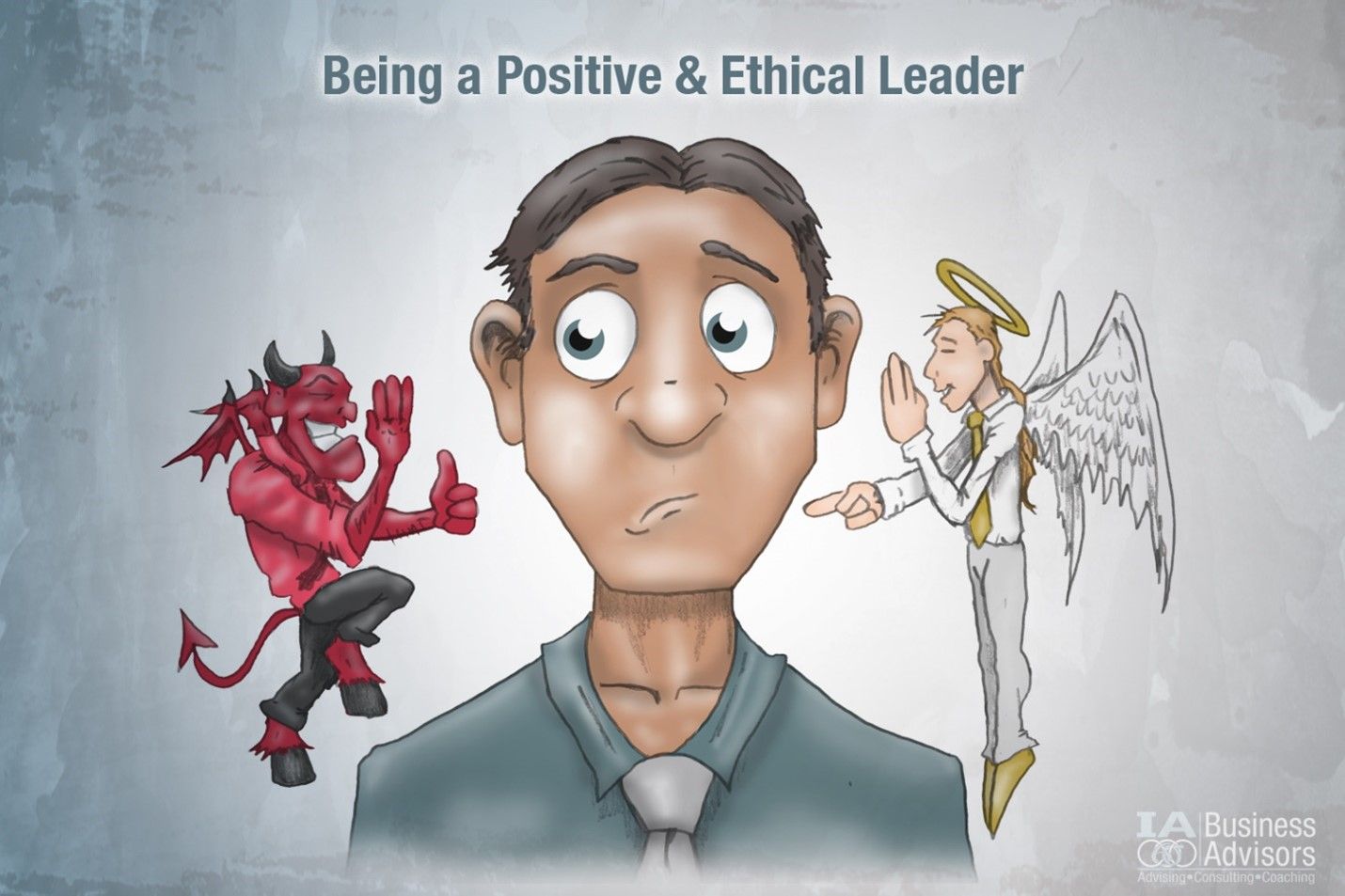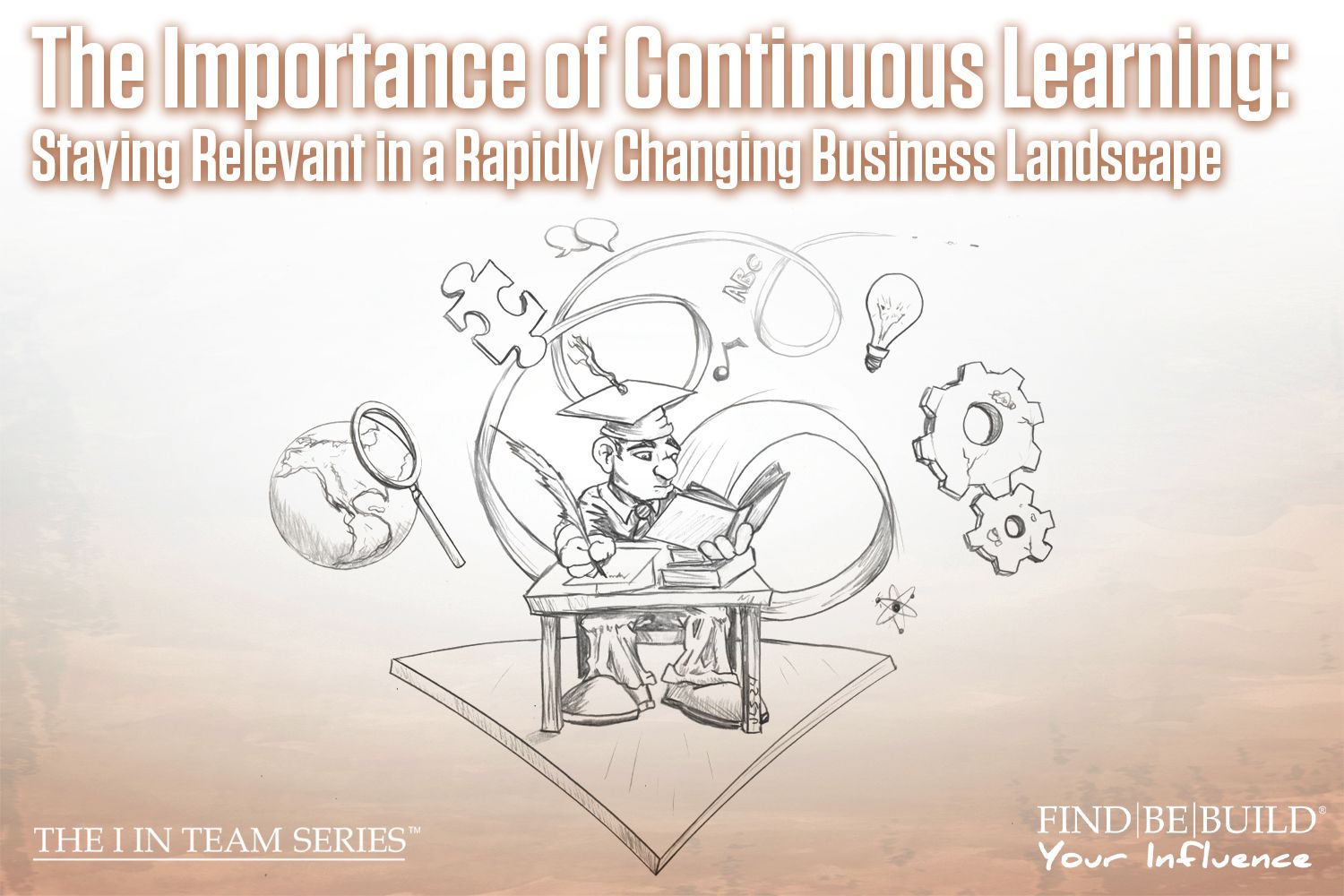Being a Positive and Ethical Leader

We talk about being a positive and ethical leader a lot through our work with The I in Team Series. Being a positive and ethical leader has an immense impact on the people around you, something we talk about frequently is knowing and understanding your influence. Being a positive and ethical leader may also seem subjective, and many are left wondering what a negative and unethical leader looks like and what the consequences are. With IA Business Advisors’ renowned leadership development program, we want to take a moment to outline what unethical leadership might look like and how it will negatively influence your team. Then, we will touch on being a positive and ethical leader to ensure you keep a positive influence.
Negative and Unethical Leadership
According to Lašáková and Remišová (2015), unethical leadership can be defined as, “someone who repeatedly and continuously, intentionally or unintentionally, and actively or passively harms individuals, organization and/or society as a whole” (p. 323). Let’s break this down a little bit. Someone may be considered unethical even if they do not intend to be unethical, because their actions are perceived by others as unethical or they create an overall negative. This is why it is so important to consider intention and perception when evaluating situations.
Although, just because someone doesn’t intend to be unethical doesn’t mean they aren’t unethical. How can this be possible? In Lašáková’s and Remišová’s article, they outline seven main points that can be considered prerequisites to unethical leadership, including: allowing bad acts to happen, being ethically silent (or choosing to ignore unethical acts committed by someone else), and being absent (2015). These three of the seven points denote how a leader may be unethical without intending to be.
Conversely, the remaining four points from Lašáková’s and Remišová’s article are: acting badly, being self-centered, self-protective, and self-serving (AKA acting narcissistically), lacking respect for rules, and being professionally incompetent (2015). In their article, they bring several different studies together to compare the different ways unethical leadership is discussed in literature, which may also be referred to as “narcissistic leadership” or “destructive leadership” (Lašáková and Remišová, 2015). These terms are all synonymous and all compared studies agree the following are traits of unethical leadership:
· Dishonesty
· Unfairness
· Corrupt or criminal behavior
· Low or lack of empathy
· Lack of responsibility
· Manipulation
· Coercion
· Using dominance to instill negative emotions
· Sabotage
(Lašáková and Remišová, 2015)
Influencing Your Team
Being a negative and unethical leader has a negative influence on your team. Lašáková and Remišová (2015) gather several studies to disseminate the negative influence of unethical leadership and how it can harm both employees and your organization as a whole. Employees are likely to suffer from low vitality, poor mental health (anxiety, feelings of helplessness, frustration, depression, and more), and behavioral stress when they are led by an unethical leader; this can cause employees to engage in unethical behavior themselves, including theft, sabotage, and deliberate devastation (Lašáková and Remišová, 2015). However, just as you can negatively influence your team, you can positively influence your team if you strive to be a positive influence. Being a positive leader has a positive influence on your team, something our newest book release, Individual Advantages: Be the “I” in Team, focuses on.
Being a Positive and Ethical Leader
Our hope is that by understanding what an unethical leader looks like and the influence such leadership has on employees and organizations, that you may begin to understand what positive leadership looks like. Being an ethical leader means remaining in control of your actions, how others perceive you, and striving to be and stay on the high road. This means remaining pragmatic and open-minded when dealing with others. Being a positive influence on your team isn’t always easy, and you won’t always be good at it. What differentiates a positive leader from a negative one is the want and will to be and do better. This means making mistakes, failing, and moving forward to keep learning from more successes and failures. Anyone has the power to change, you just have to want to change. Start building healthy habits for yourself to increase your positive influence. Want a sneak peek at other tips for being a positive leader? Check out a sneak peek of our second book’s Table of Contents!
Conclusion
Being a positive and ethical leader means understanding how to not be a negative and unethical leader. Sometimes it’s easy to read how to do and be something, but it doesn’t always stick if we don’t understand what the opposite side looks like or what the effects are. Start by examining your intentions and motivations and ask yourself how others may perceive you. You may even consider asking some trusted peers for their perception of you. This may help you on your journey to being a positive influence for your teams. If you still need help, our team has been engaged in leadership development for 25 years! Contact us or purchase our newest book release Individual Advantages: Be the “I” in Team to learn more about being a positive and ethical leader.
References
Lašáková, A., & Remišová, A. (2015). Unethical leadership: Current theoretical trends and conceptualization. Procedia Economics and Finance, 34, 319-328.











